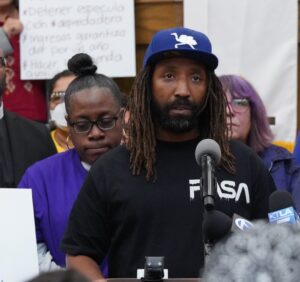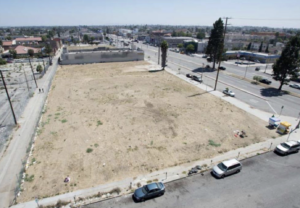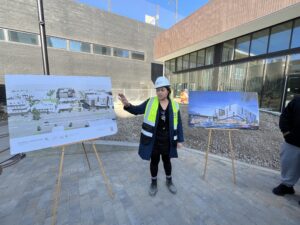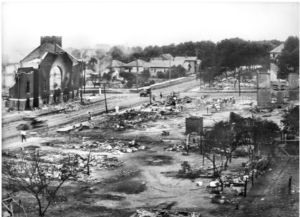
Recover, Revitalize and Remain–Rebuilding LA After the Wildfires
The concern for an equitable recovery in the aftermath of the Eaton Wildfire in California reflects longstanding issues of environmental and social inequality. Recovery efforts often fail to address disparities, leaving behind communities that lack the financial means to rebuild their homes or businesses, land leading to a prolonged cycle of displacement and economic instability. Recovery and revitalization will require intentional actions. This includes expanding access to emergency funds and ensuring that recovery plans prioritize affordable housing and community-driven rebuilding efforts. Without these measures, wealthier areas are likely to recover more swiftly, while low-income and marginalized communities will struggle to regain footing, obliterating the culture of communities and widening existing wealth disparities.
 Donny Kincey Eaton Fire Survivor Speaks About His Family’s Losses
Donny Kincey Eaton Fire Survivor Speaks About His Family’s Losses
We must resolve to: HONOR AND REBUILD THE CULTURAL AND RACIAL DIVERSITY OF IMPACTED COMMUNITIES: Physical destruction and temporary displacement, as well as the predation of speculators, mean that the fires have put the cultural histories and contributions of Indigenous Peoples, Black and Latino communities at risk, especially in Altadena and Sylmar. Our leaders must take lessons from Lahaina and other similar climate catastrophes to make those communities whole and even more resilient – both economically and environmentally.
We must resolve to: LIFT UP THE VOICES OF THOSE DIRECTLY IMPACTED: Rebuilding must be guided by those who’ve lost the most. Directly hearing their experiences and needs can help ensure that recovery efforts actually help neighborhoods recover, and help safeguard community ties strained by this crisis. Efforts must be made to gather data on impact and intentionally reach out to all who have been affected by the fires, rather than simply allowing the loudest voices to dominate.
We must resolve to: SUPPORT FOR ALL IMPACTED BY FIRES: While restrictions exist on Federal/FEMA benefits, all state and local programs and supports should be available to the undocumented residents who are part of our communities and will work to rebuild alongside their neighbors.
Time and again we have seen the impact of disinvestment in historic communities after catastrophic events. Whether man-made or natural, it can take decades to recover. This displacement isn’t just about losing homes; it’s about losing cultural, social, and economic foundations of communities that have been built over generations.
South Los Angeles
South Los Angeles residents know what it’s like to watch portions of its community burn to the ground. After six days of fire and destruction that resulted from the Rodney King Trial verdicts, 54 people were dead, more than 1,000 were injured,12,000 had been arrested, and over $1 billion in property damage had been sustained. It has taken more than 30 years to see a reinvestment in South Los Angeles which sustained the majority of the damage. In fact, a lot adjacent to Community Coalition’s headquarters lay blighted and empty for three decades.


After 30 years of blight, Los Angeles County used eminent domain—which allows for privately owned land to be taken and used for public projects—to take a four-acre property owned by developer Eli Sasson and Sassony Group that had been barren since it burned down in 1992. Today, it is the site of the Evermont project. Located at the Northeast corner of Vermont and Manchester, Evermont is a collaborative mixed-use, transit-oriented affordable housing community.
New Orleans
Hurricane Katrina, which struck the Gulf Coast in August 2005, had devastating effects, particularly on the Black communities of New Orleans and the broader region. The monetary damage from the hurricane was staggering, with total damages estimated at $125 billion. Black communities, which made up a significant portion of New Orleans’ population, were disproportionately affected by the disaster. The destruction of homes, businesses, and infrastructure in predominantly Black neighborhoods—such as the Lower Ninth Ward—was extensive, and the recovery was slow and uneven. Many Black residents were left without homes, and their property and businesses were destroyed.
The displacement of Black people due to Hurricane Katrina was particularly significant. It is estimated that more than 1 million people were displaced across the Gulf Coast region, with a large proportion of them being Black residents of New Orleans. Many of these individuals faced barriers to returning, including lack of affordable housing, poor recovery efforts in their neighborhoods, and racial inequities in access to recovery resources. The displacement led to a long-term diaspora, with many Black New Orleanians settling in cities like Houston, Atlanta, and other parts of the U.S.
Tulsa

Historians and economists suggest the total financial loss was at least $1.5 million to $2 million in property damage in 1921, equivalent to about
$30 million to $40 million today when adjusted for inflation. This includes the destruction of over 1,000 homes, businesses, and civic buildings in the Greenwood District, which was home to a prosperous Black community known as Black Wall Street. Beyond the direct property damage, the massacre caused massive disruptions to the livelihoods of residents, many of whom lost everything in a matter of hours. There was also a loss of wealth, capital, and economic progress that would have compounded over time. Many of the businesses in the district were thriving before the attack, including banks, hotels, retail stores, and cultural institutions. The economic growth the community had built up was essentially erased, and the effects lasted for generations.
By reflecting on past instances like the destruction caused by the 1992 Civil Unrest in South Los Angeles, Hurricane Katrina, and the Tulsa Race Massacre, we see how the recovery process has historically ignored or delayed rebuilding efforts for our communities. The displacement and economic losses endured—sometimes for generations—serve as painful examples of how recovery efforts can often bypass the people who need them most. It is vital that, as we stand with the survivors of the 2025 Los Angeles Wildfires, we demand an inclusive and just approach to rebuilding that actively seeks to empower and support the people who have already been through so much.
